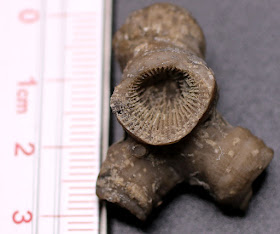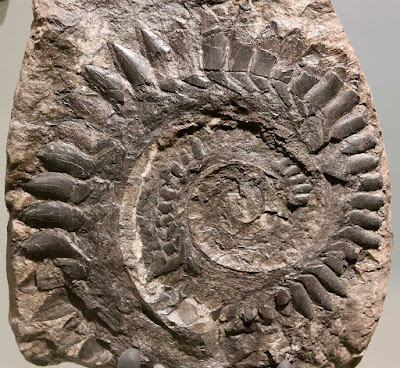This month I paid a brief visit to the
Besser Museum at Alpena, Michigan, USA. They had a large exhibit on Native American artifacts found in Michigan. While it was not identified as the above pictures are
wampum that had threaded sting of crinoid columnals according to the 2018 book
101 American Fossil Sites you've gotta see by
Albert Binkley Dickas (pages 98-99). It makes sense as while fossil hunting in Alpena I found quite a few crinoid stems. Though I am not sure since the exhibit was labeled "Various Shell Beads". It is looks like the shells where cut in circles and then a hole drilled in the middle. So they look like crinoid stems.
The Besser Museum for Northwest Michigan was named for
Jesse Besser (1882-1970) who perfected and produced machines that create these famous concrete blocks. Out in the yard is a huge boulder sized
Hexagonaria (Gürich, 1896) coral fossil (see my foot for size reference). They also have areas where you can search for and keep fossils from material dumped there from local quarry.










































